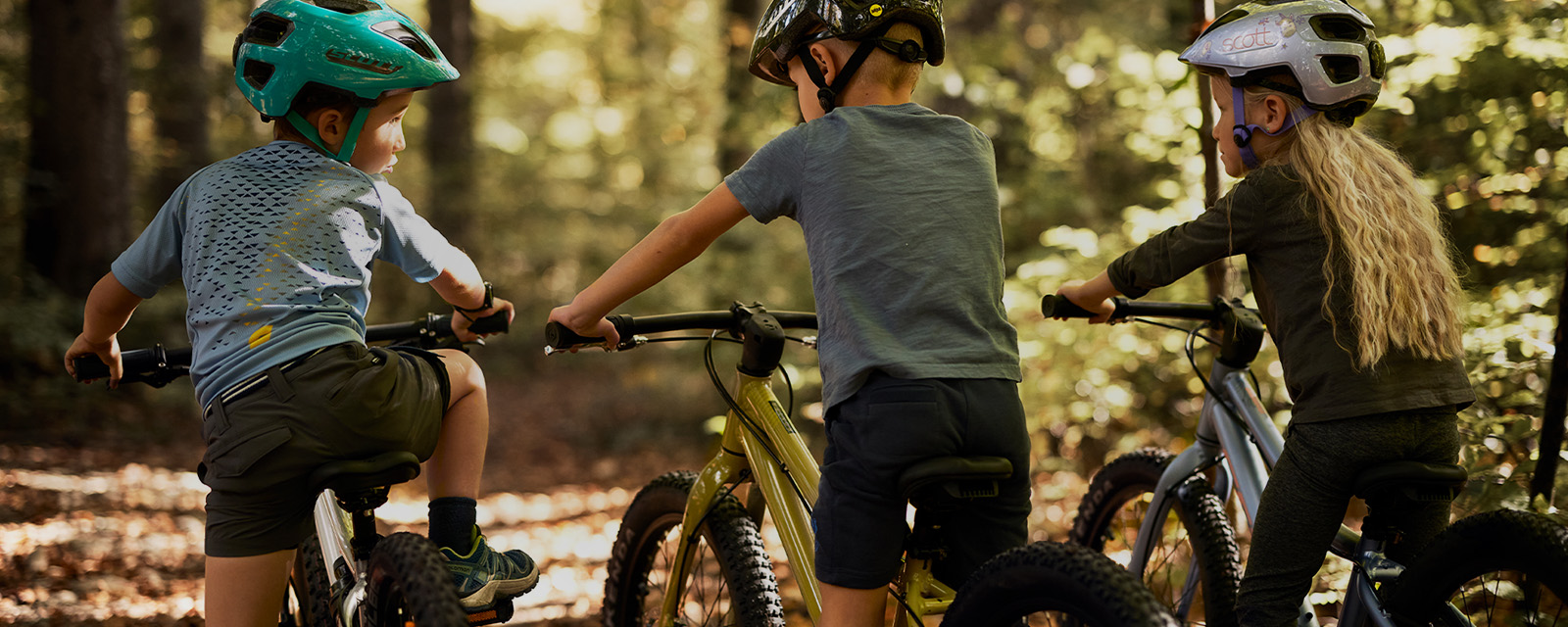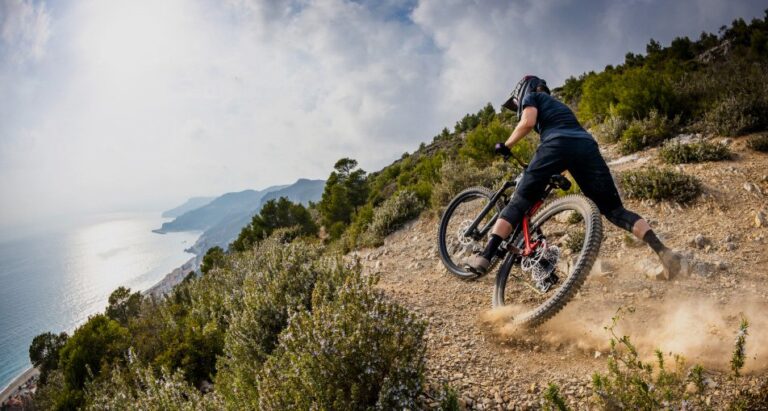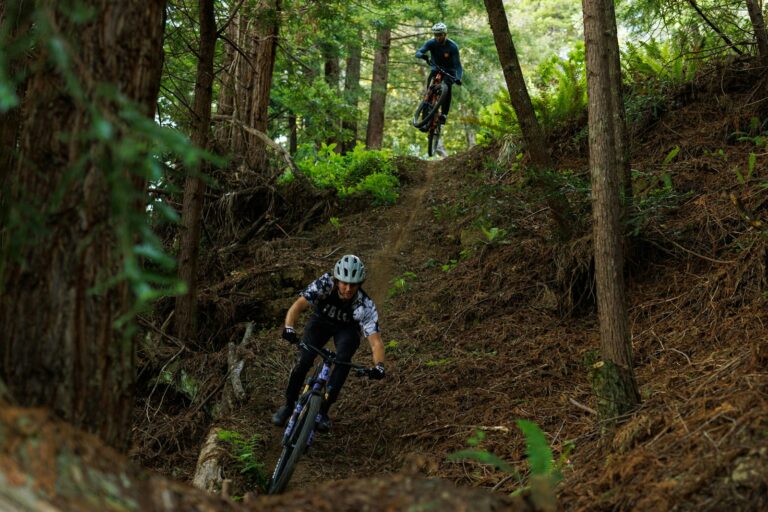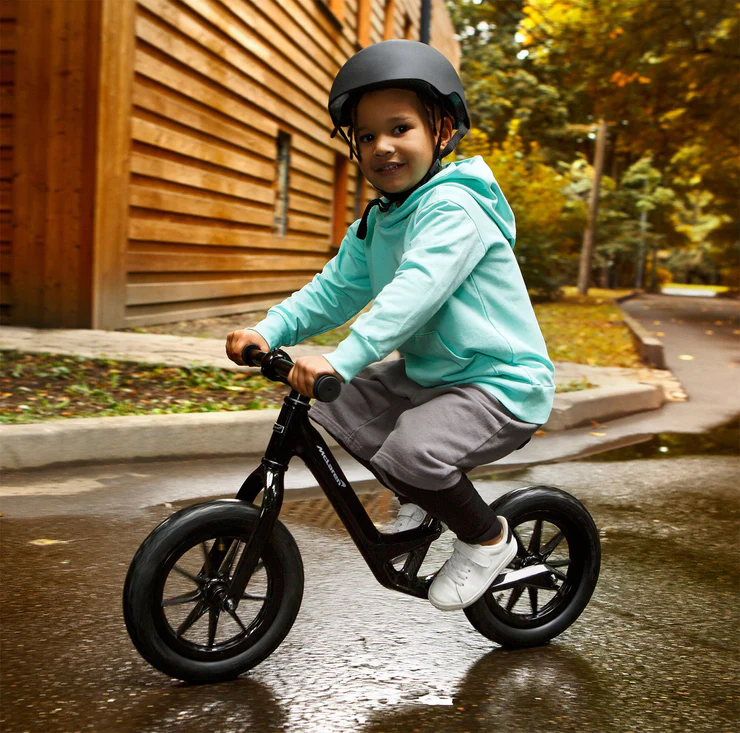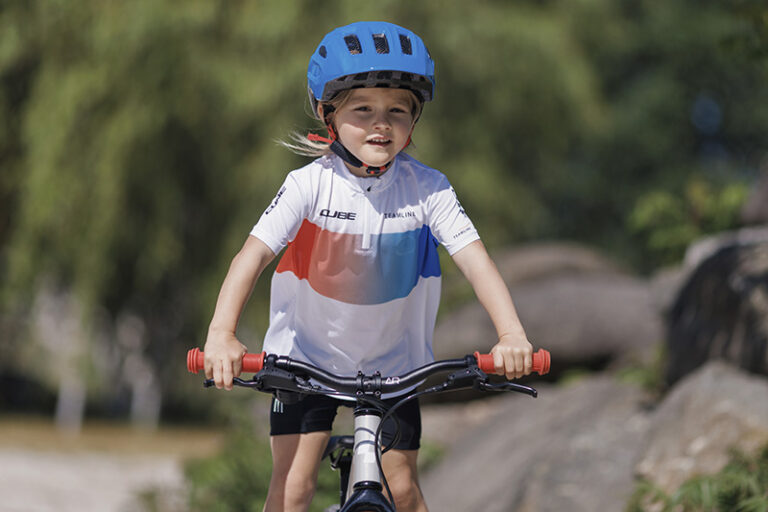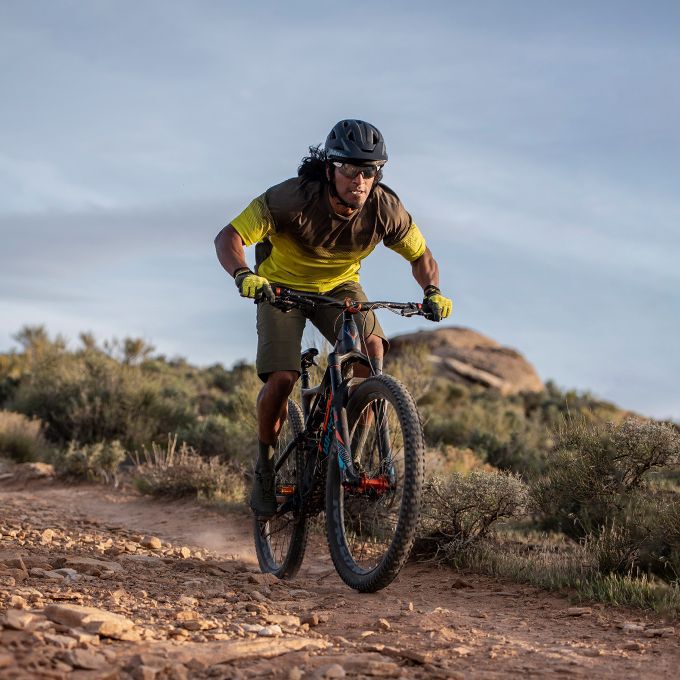Pedals of Progress: How to Teach Your Child to Ride a Bike
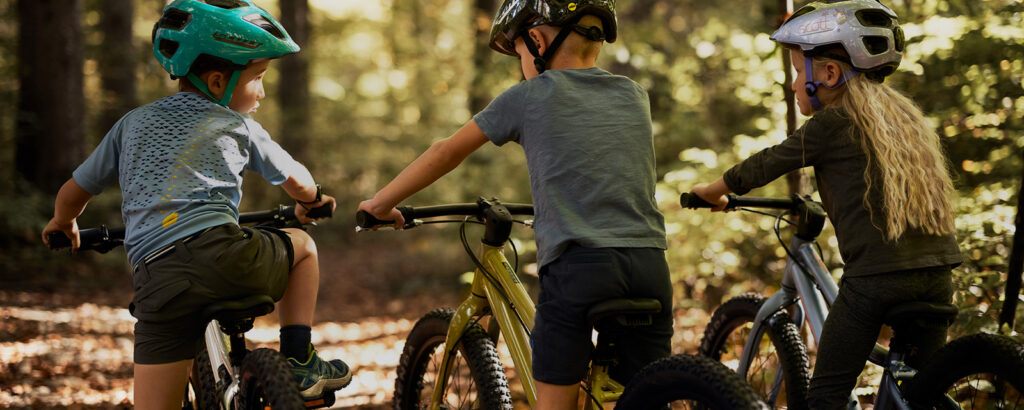
Key Point Summary of How to Teach Your Child to Ride a Bike:
- Start with a Balance Bike: These bikes, which lack pedals, help children learn balancing skills before they graduate to pedaling.
- Choose the Right Environment: A flat, open, and soft area, like grass, can provide a safe learning space.
- Go Step-by-Step: Break down the learning process into manageable steps, from walking the bike to gliding and eventually pedaling.
- Be Patient and Positive: Encouragement and patience are key to keeping the learning process enjoyable and stress-free for your child.
Teaching your child to ride a bike is one of those quintessential parenting experiences that’s as rewarding as it is challenging. Having navigated the world of competitive racing across mountain biking, gravel grinding, and cyclocross, I’ve learned a thing or two about what it takes to not just ride a bike, but to ride it well.
These experiences have equipped me with a unique perspective on teaching kids to ride, blending patience, encouragement, and the right approach to help them find their balance and confidence on two wheels. Here’s a comprehensive guide to teaching your child to ride a bike, packed with tips and insights to make the learning process as smooth and enjoyable as possible.
The Journey Begins
The process of teaching a child to ride a bike is as much about the journey as it is about the destination. It’s a time of growth, not just in terms of physical skills but also in building confidence and independence.
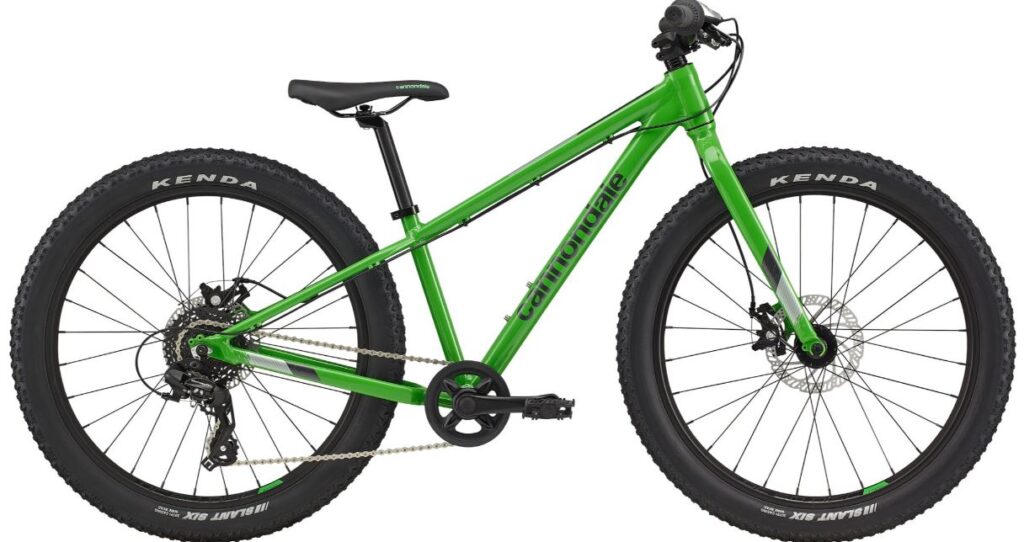
Starting with Balance
The concept of balance is foundational to cycling, and where better to start than with a balance bike? These pedal-less wonders allow kids to focus solely on finding their equilibrium without the added complexity of pedaling. By simply walking the bike along and gradually learning to lift their feet, children naturally discover the feeling of balance.
Choosing the Right Bike
Selecting the right size bike is crucial. Your child should be able to sit on the saddle with both feet flat on the ground. This not only ensures safety but also builds confidence as they learn. As they progress, adjusting the seat height to allow for a slight bend in the knee when the foot is on the pedal in its lowest position will facilitate proper pedaling technique.
Creating a Positive Learning Environment
Find a flat, open space where your child can practice without worrying about traffic or too many obstacles. Grass fields can be great for the first few tries as they offer a softer landing for inevitable falls, but a smooth, paved surface might be easier for balancing and pedaling as they gain confidence.

Breaking It Down into Steps
- Walking the Bike: Start by having your child walk the bike to get used to its weight and how it moves.
- Gliding: Once comfortable, encourage them to sit on the bike and glide, using their feet to push off the ground.
- Balancing: As they become more confident, they’ll start to lift their feet more, experiencing true balance.
- Pedaling: Introduce pedaling only once they’re confidently gliding and balancing for several seconds.
Be Patient and Offer Encouragement
Patience is your best friend during this process. Every child learns at their own pace, and it’s important to celebrate the small victories along the way. Positive reinforcement and encouragement can turn a frustrating experience into a fun and memorable one.
Safety First
Don’t forget to emphasize safety from the start. A properly fitting helmet, knee and elbow pads, and closed-toe shoes are essential. Teaching your child to look ahead, use the brakes gently, and eventually, to signal turns, are all part of becoming a proficient rider.
Learning to Fall
Falling is an inevitable part of learning to ride a bike. Teaching your child how to fall safely—tucking and rolling, and trying to keep the arms in—can minimize injuries and make the experience less scary.
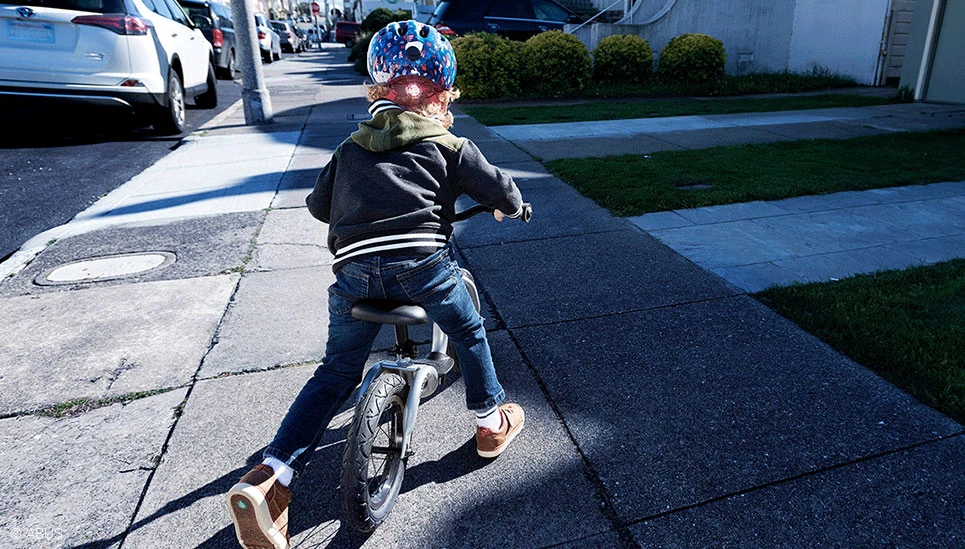
When to Step Back
It can be tempting to hold onto the bike (or your child) to prevent falls, but it’s important to let them find their balance on their own. You can start by holding the back of the seat to help stabilize them but aim to gradually reduce your support as they become more confident.
Celebrate the Milestones
Remember to celebrate every milestone, no matter how small. Whether it’s their first successful glide or the first time they pedal without assistance, recognizing these achievements fuels their desire to keep learning and growing.
How to Teach Your Child to Ride a Bike: Final Thoughts
Teaching your child to ride a bike is a journey filled with ups and downs, but the joy of watching them ride off on their own for the first time is unparalleled. It’s not just about the physical act of biking but about instilling a sense of independence, resilience, and a lifelong love for cycling. With patience, encouragement, and the right approach, you’ll set the foundation for many happy rides to come. The goal isn’t to rush the process but to ensure it’s a positive, confidence-building experience that they (and you) will look back on fondly.
For a child’s first ride, choosing a bike that’s easy to handle, safe, and fun to ride is crucial. Balance bikes are often recommended for very young riders as they teach the fundamental skill of balancing on two wheels before pedaling. Among the many options available, the Woom 1 Balance Bike stands out as a top choice for a child’s first bike.
Why the Woom 1 Balance Bike?
- Lightweight Frame: Its aluminum frame makes it easy for a child to handle and maneuver, which is crucial for building confidence in young riders.
- Child-Specific Design: The bike is designed specifically for small riders, with a low minimum seat height, small hand grips, and a geometry that encourages an upright riding position for better balance and control.
- Durability: High-quality construction ensures the bike can withstand the bumps and knocks of learning to ride.
- Safety Features: Comes equipped with a steering limiter to prevent oversteering (which can lead to falls) and has a rear-hand brake that helps children learn to control speed before they transition to a pedal bike.
The Woom 1 offers an excellent foundation for developing the balance and coordination needed to ride a pedal bike in the future. Its focus on safety, ergonomics, and fun makes it an ideal choice for a child’s first ride.
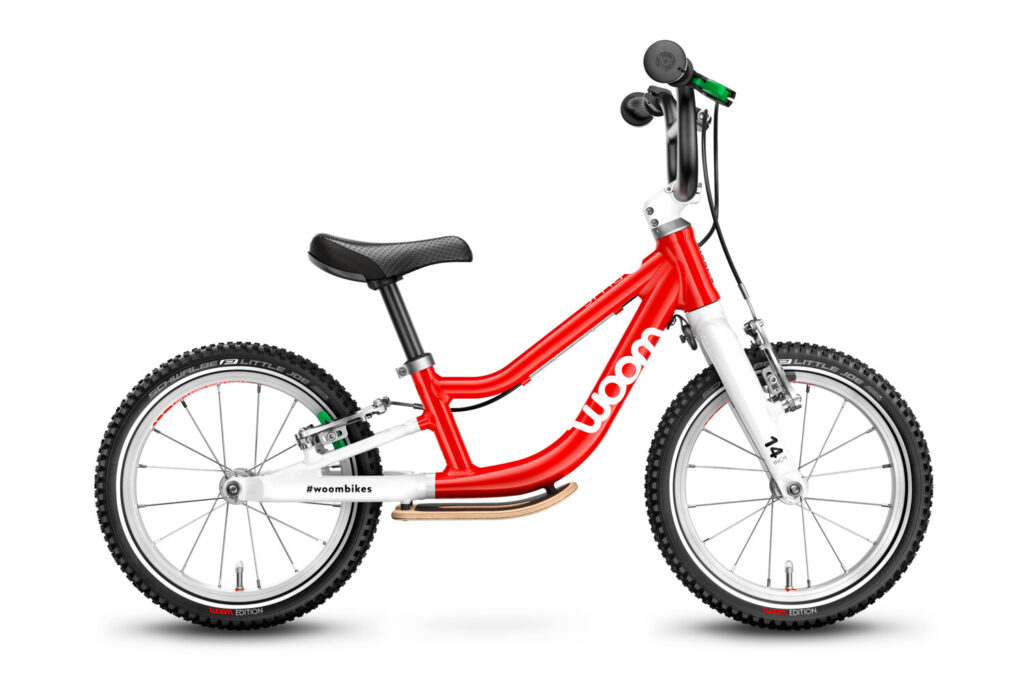
FAQ
What is the best age to teach a child to ride a bike?
Around 3 to 6 years old is ideal for starting with a balance bike, with most kids ready to transition to a pedal bike around 5 to 8 years old, depending on their physical coordination and confidence.
How do you ride a bike for beginners for kids?
Start with a balance bike to learn balancing, then progress to a pedal bike without pedals or training wheels to practice gliding. Finally, add pedals and teach pedaling and braking. Encourage, be patient, and keep practice sessions fun and short.
What age can a child get a bike?
Children as young as 18 months can start with a balance bike, with suitable pedal bikes typically introduced around 3 to 6 years old, depending on the child’s size and readiness.
How quickly can a child learn to ride a bike?
It varies widely; some children might learn in the afternoon, while others may need several weeks. Consistent practice, patience, and encouragement are key to progress.
